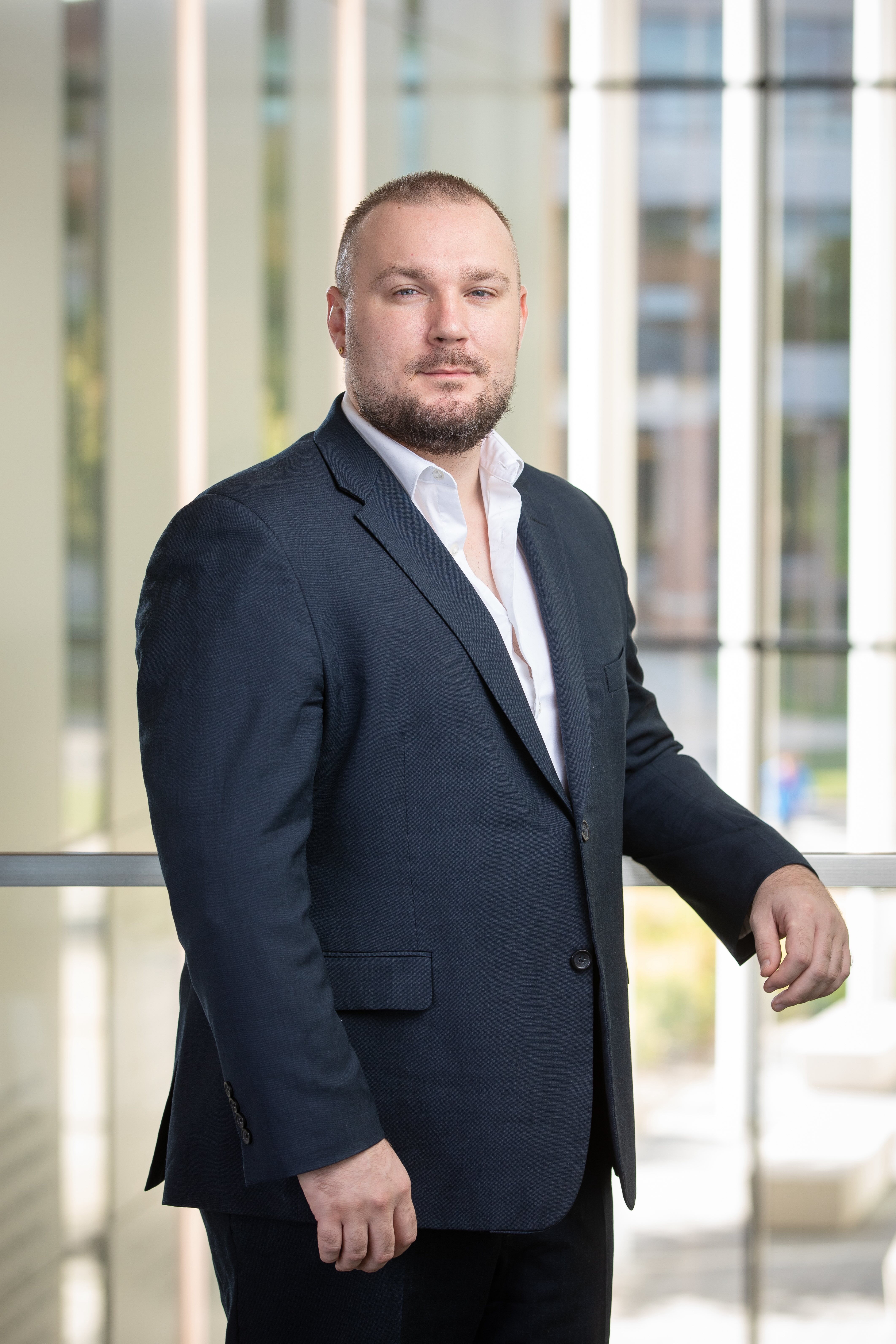Student View: An Entrepreneur's Journey From Civil Engineering To Water Innovation
Elliot Smith is an MBA candidate at the Eli Broad College of Business. Originally from Danville, Pennsylvania, he has spent a significant portion of his career in Detroit, Michigan. He is the founder and CEO of Motmot, a company at the forefront of innovation in water main inspection.

Growing up as an "Army Brat," I moved quite a bit but eventually settled in the Detroit Metro area around middle school. After high school, I struggled to find a career path that resonated with me until discovering civil engineering — a field that appealed to a desire to build and create on a grand scale. I dedicated myself to this discipline, graduating with an undergraduate degree at 27, and spent seven years working as a municipal engineering consultant. These experiences deepened my appreciation for city project complexities and their criticality to all of us; especially those hidden beneath our feet in underground infrastructure.
My Journey to MSU
The aspiration to make a meaningful impact on community capital projects, coupled with recognizing gaps in my business knowledge, led me to explore MBA programs in Michigan. I was drawn to MSU by its strong focus on entrepreneurship and cross-pollination efforts across campus. I was pulled in by the intimate approach and smaller class sizes of its MBA program. After a visit to the campus and Minkoff Pavilion in early Spring 2022, I applied, marking the beginning of a welcomed chapter in my academic and professional life.
The Genesis of Motmot
My time in the MBA program served as a critical incubation period for Motmot. At its core, Motmot deploys scalable Autonomous Underwater Robots (AURs) to inspect water mains, offering cities a level of control and visibility over their infrastructure previously deemed impossible. This venture provides predictive tools against water main breaks, supports our water space workforce, and enhances asset management. In just two years, we've managed to secure over $200,000 in funding, with an additional $100k pending, filed for four patents, completed the NSF National I-Corps program, developing prototypes, and initiated an Inspection Pilot Program with eight cities across the U.S. Progress can definitely feel slow at times, like walking through the bottom of the Red Cedar and dodging the graveyard of scooters, but looking back at our accomplishments fuels our mission to improve community water security and affordability.
Balancing Acts: Graduate Student and Founder
In my first year as a graduate student, I heavily prioritized the MBA program, using coursework to directly inform Motmot's business model. However, the priority shifted in the second year, with Motmot taking the forefront. It's a roller coaster, filled with highs and lows, but it can be exhilarating and rewarding. Motmot's nature as a "hard tech" venture means a longer, resource-intensive journey to commercialization, and is a challenge I’m fully embracing.
Revelations and Support at MSU
MSU has been instrumental in Motmot's development. Through the NSF National I-Corps program and with support from the Burgess Institute, the MSU Engineering Department, and Spartan Innovations, the team and I have engaged with water management leaders across North America, validating our business model and ensuring we're at the right place, at the right time, with the right technology. These interactions and the backing of MSU's resources have been so vital in our journey.
Looking Ahead
As we begin our seed funding round and continue to apply for significant grants, our focus remains on commercialization and expanding our pilot program. The road ahead is exciting, and the potential for Motmot is boundless. With each step, we're moving toward an adventure in business and fulfilling a mission that could redefine how cities manage and maintain their water infrastructure assets.